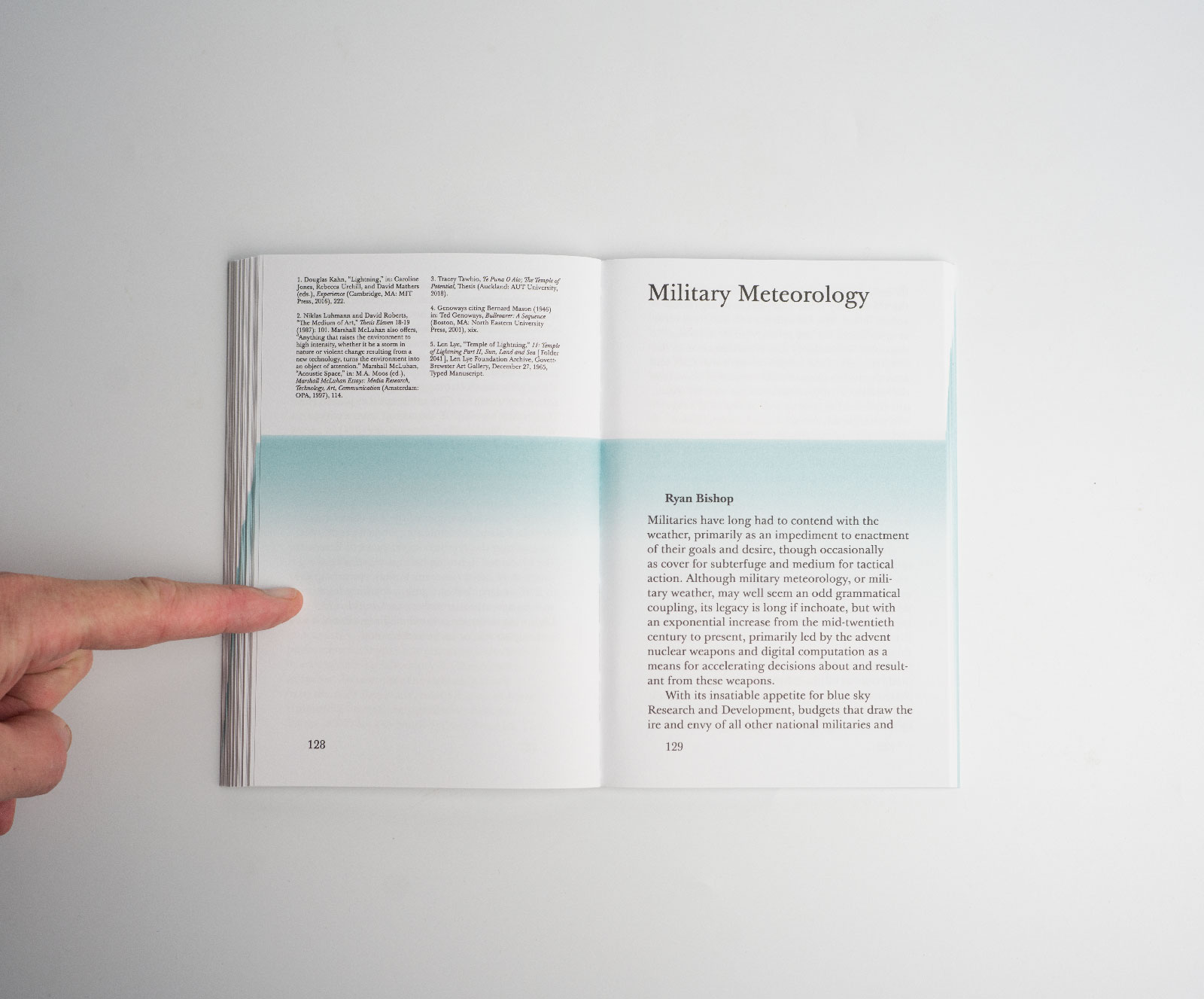Publication
Words of Weather: A glossary

This glossary, published by Onassis Foundation, maps terms for a political ecology of experience. The Glossary accompanies the exhibition “Weather Engines” (curated by Daphne Dragona and Jussi Parikka), and provides familiar and unexpected terms as proposed and written by artists, philosophers, academics, and architects. The design is a kind reminder of the sea level rise, every page, every text is leading to a total flooding experience.









Weather exists as an atmosphere that can be measured, as an environment that is lived, and as time in which we experience humidity, pressure, temperature, and visibility. What would be the appropriate terms of weather that speak to this trio of concerns – measure, experience, and time? This glossary of weather is a manual to navigate through the contemporary moment on the surface and in the air, on bodies, and in our environments. It examines how weather has significance as a reality defined through scientific models and technical sensors, while it is being felt differently and unevenly in different parts of the world. It studies the weather as an ecology taking in mind its technologies and affects, its scientific language and poetics, its phenomena and interpretations through various perspectives, cultures, and geographies.
Texts: Ryan Bishop, Benjamin Bratton, Holly Jean Buck, J. R. Carpenter, Sria Chatterjee, Sean Cubitt, Heather Davis, Daphne Dragona, Matthew Fuller, Geocinema (Asia Bazdyrieva & Solveig Suess), Olga Goriunova, Pujita Guha (for the Forest Curriculum), Orit Halpern, Eva Horn, Elise Misao Hunchuck, Lydia Kallipoliti, Adrian Lahoud, open-weather, Jussi Parikka, John Durham Peters, Andreas Philippopoulos-Mihalopoulos, Robert Gerard Pietrusko, Janine Randerson, Karolina Sobecka, The Weathering Collective (Tessa Zettel, Astrida Neimanis, Jennifer Mae Hamilton), May Ee Wong
Publisher: Onassis Foundation
Edited by: Jussi Parikka and Daphne Dragona
Design by: Typical Organization with Ella Villaumié
find the publication here